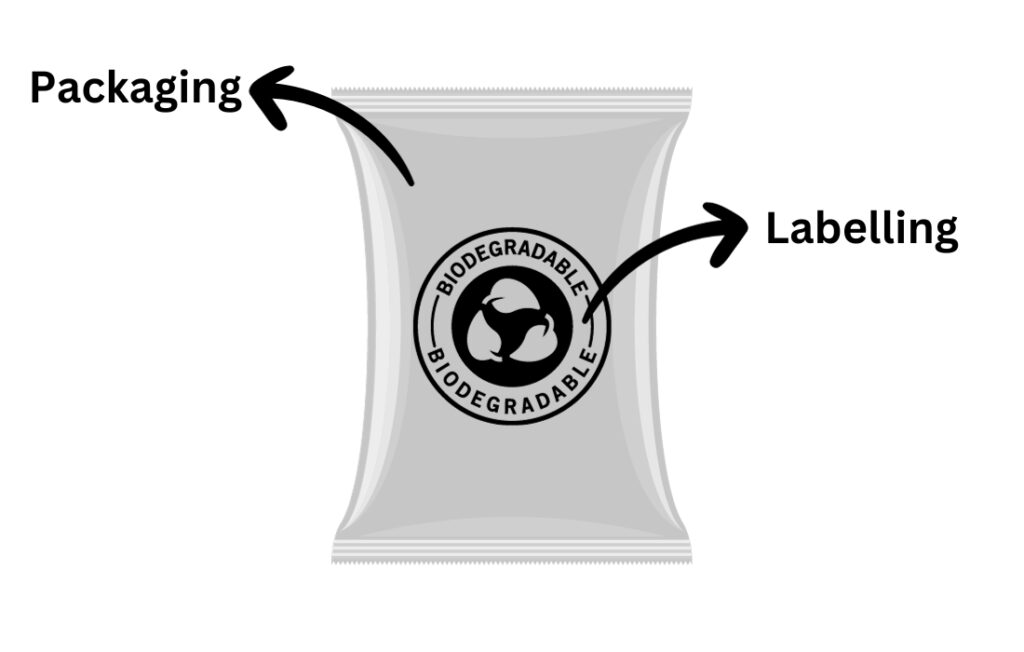
Packaging and labeling play pivotal roles in our everyday lives. From the moment we pick up a product to the time we consume it, they are an integral part of the entire process. Packaging is not just about aesthetics; it serves various functions, from protecting the product to ensuring it reaches you in the best condition. On the other hand, labeling provides us with vital information about the product and often acts as a visual representation of the brand.
In this blog, we will delve into the fascinating world of packaging and labeling, understanding their significance and the differences between the two.
Packaging vs. Labelling (A Comparison)
| Packaging | Labelling |
|---|---|
| Packaging refers to the process of enclosing a product in materials such as cardboard, plastic, glass, or other materials to protect, contain, and present the product. | Labeling involves attaching tags, stickers, or markings to a product's surface, and providing essential information about the product, such as ingredients, usage instructions, and branding elements. |
| Packaging primarily serves to protect and contain the product, safeguarding it from physical damage, contamination, and environmental factors. | Labeling provides consumers with information about the product, such as ingredients, nutritional details, manufacturing and expiry dates, usage instructions, and safety warnings. |
| Packaging materials typically include cardboard, plastic, glass, and other robust materials designed to provide physical protection and structural integrity to the product. | Labels are often made from paper or adhesive materials that are lightweight and less durable compared to packaging materials. |
| Packaging places a strong emphasis on the overall design and structure of the container. | Labeling focuses on the visual elements that appear on the product's surface. This includes logos, brand names, design elements, and information presentation. |
| Packaging is generally sturdier to withstand the rigors of transportation and handling. | Labels are relatively delicate and can be damaged easily, especially when exposed to moisture or physical contact. |
| Packaging is subject to various environmental regulations, particularly regarding the use of materials and practices that impact sustainability and recyclability. | Labeling is subject to regulations that focus on the accuracy and consistency of product information, such as ingredients, nutritional data, and safety warnings. |
| Packaging can represent a significant cost factor in production, as it requires durable materials, design considerations, etc. | Labeling costs are relatively lower in comparison to packaging. |
What is Packaging?
Packaging is more than just a pretty box; it’s a safeguard for the products we love. It encompasses the materials, design, and construction used to encase a product, ensuring it remains intact from production to consumption.
Packaging serves as a protective shield, safeguarding the product against physical damage, contamination, and environmental factors. It also extends the shelf life of many goods, reducing wastage.
The presentation aspect of packaging should not be understated. A well-designed package can entice customers and differentiate a product from its competitors. Think about your favorite cereal box or the distinctive shape of a Coca-Cola bottle.
What is Labeling
Labeling is more than just the sticker on a jar; it’s the information hub of the product. It includes essential details such as ingredients, nutritional information, manufacturing date, and expiry date. These details are crucial for consumers to make informed choices.
Labeling also plays a significant role in branding and marketing. The design and style of labels can evoke specific emotions and associations. For instance, the iconic Nike Swoosh instantly communicates quality and performance.
How Labeling Provides Information and Branding
Labeling provides vital information that empowers consumers. Whether you’re checking the ingredients in your food for allergies or the care instructions on your clothing, labels offer clarity.
On the branding front, labels are the visual ambassadors of a product. They use color, typography, and imagery to create a distinct identity. Consider the Apple logo; it’s a symbol of elegance and innovation.
Key Differences Between Packaging and Labelling
- Function: Packaging primarily protects and contains the product, while labeling provides information and branding.
- Material: Packaging uses materials like cardboard, plastic, and glass, while labels are often made of paper or adhesive materials.
- Design: Packaging focuses on the overall design and structure of the container, whereas labeling emphasizes the visual elements on the product’s surface.
- Durability: Packaging is sturdier to withstand transportation and handling, while labels are relatively delicate.
- Regulations: Packaging is subject to environmental regulations, whereas labeling must adhere to content and branding guidelines.
- Cost: Packaging can be a significant cost factor in production, while labeling costs are relatively lower.
Functions of Packaging and Labelling
Packaging serves a variety of essential functions in the world of commerce and product distribution. These functions go beyond merely encasing a product in an attractive wrapper.
Key Functions of Packaging
- Protection: One of the primary functions of packaging is to protect the product. It acts as a shield, safeguarding the contents from external factors such as physical damage, moisture, sunlight, and contaminants.
- Containment: Packaging holds the product in a secure and convenient manner, preventing spillage or breakage during transportation and handling.
- Information: Packaging is a valuable source of information. It often includes labels, instructions, and branding elements that provide consumers with essential details about the product.
- Marketing and Promotion: Packaging is a potent tool for marketing and brand promotion. The design and aesthetics of packaging play a crucial role in attracting customers and differentiating a product from its competitors.
Key Functions of Labelling
Labeling is an integral part of product presentation, providing vital information and contributing to branding. Here are four key functions of labeling:
- Information Dissemination: One of the primary functions of labeling is to disseminate essential information to consumers. Labels contain critical details, including ingredients, nutritional facts, allergen warnings, usage instructions, and safety precautions.
- Branding and Identification: Labeling serves as a visual representation of the brand. It includes logos, brand names, and design elements that help consumers recognize and identify a particular product or company. The Nike Swoosh, for example, is instantly recognizable and symbolizes quality and athletic performance.
- Compliance with Regulations: Labels must adhere to various legal regulations and industry standards. These regulations ensure the accuracy and safety of product information. Failure to comply with labeling requirements can result in legal issues, product recalls, and damage to a brand’s reputation.
- Marketing and Differentiation: Labels play a significant role in marketing and product differentiation. The design and style of labels can evoke specific emotions and associations. For example, premium wines often feature elegant and sophisticated labels, while children’s products use vibrant and playful designs.
Types of Packaging
- Primary Packaging: This is the packaging closest to the product, such as the bottle around your favorite shampoo.
- Secondary Packaging: The box or wrapper that holds primary packages, like the cardboard box encasing your smartphone.
- Tertiary Packaging: This is the outermost packaging used for transportation and storage, such as pallets and shrink wrap.
Examples of Packaging for Different Industries
- Food Industry: Canned goods, pouches, and glass jars.
- Electronics Industry: Blister packs, foam packaging, and anti-static bags.
- Pharmaceutical Industry: Blister packs, vials, and pill bottles.
Types of Labels
- Brand Labels: These carry the brand’s logo and are integral for brand recognition.
- Descriptive Labels: These provide product details, such as ingredients, usage instructions, and nutritional information.
- Grade Labels: Common in the food industry, they indicate the quality or grade of the product.
- Warning Labels: Essential for safety, these labels communicate potential hazards or risks.
Regulations and Compliance
Both packaging and labeling are subject to various regulations, depending on the industry and location. For packaging, this includes environmental laws and safety standards. Labeling must adhere to guidelines on the accuracy of product information and branding consistency.
Non-compliance can lead to legal issues, damage to a brand’s reputation, and even product recalls. It’s crucial for businesses to meet all relevant regulations to avoid these pitfalls.
Conclusion
In conclusion, packaging and labeling are not merely functional aspects of a product; they are integral components of marketing, consumer information, and protection. Understanding the nuances of these elements can lead to more informed choices and successful brand identities. So, the next time you unwrap a product, take a moment to appreciate the thought and effort behind the packaging and labeling.




One Comment